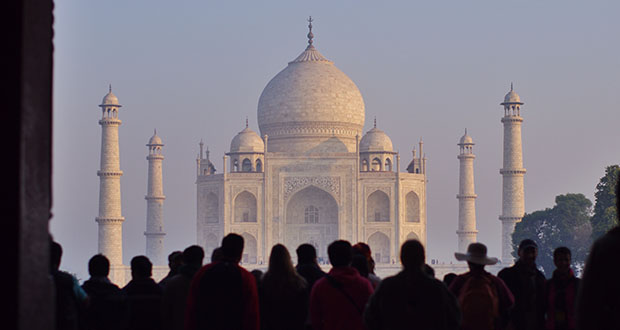Poet Rabindranath Tagore described it as ‘a teardrop on the cheek of eternity’; Rudyard Kipling as ‘the embodiment of all things pure’; while its creator, Emperor Shah Jahan, said it made ‘the sun and the moon shed tears from their eyes’. Every year, tourists numbering more than twice the population of Agra pass through its gates to catch a once-in-a-lifetime glimpse of what is widely considered the most beautiful building in the world. Few leave disappointed.
The Taj was built by Shah Jahan as a memorial for his third wife, Mumtaz Mahal, who died giving birth to their 14th child in 1631. The death of Mumtaz left the emperor so heartbroken that his hair is said to have turned grey virtually overnight. Construction of the Taj began the following year; although the main building is thought to have been built in eight years, the whole complex was not completed until 1653. Not long after it was finished, Shah Jahan was overthrown by his son Aurangzeb and imprisoned in Agra Fort, where for the rest of his days he could only gaze out at his creation through a window. Following his death in 1666, Shah Jahan was buried here alongside his beloved Mumtaz.
In total, some 20,000 people from India and Central Asia worked on the building. Specialists were brought in from as far away as Europe to produce the exquisite marble screens and pietra dura (marble inlay work) made with thousands of semiprecious stones.
The Taj was designated a World Heritage Site in 1983 and looks nearly as immaculate today as when it was first constructed – though it underwent a huge restoration project in the early 20th century.
For More Information Visit: Sai India Travel


